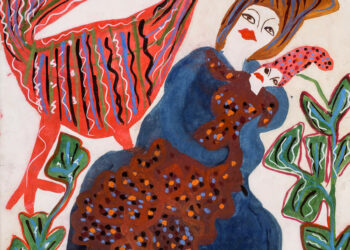An intimate perspective on trauma
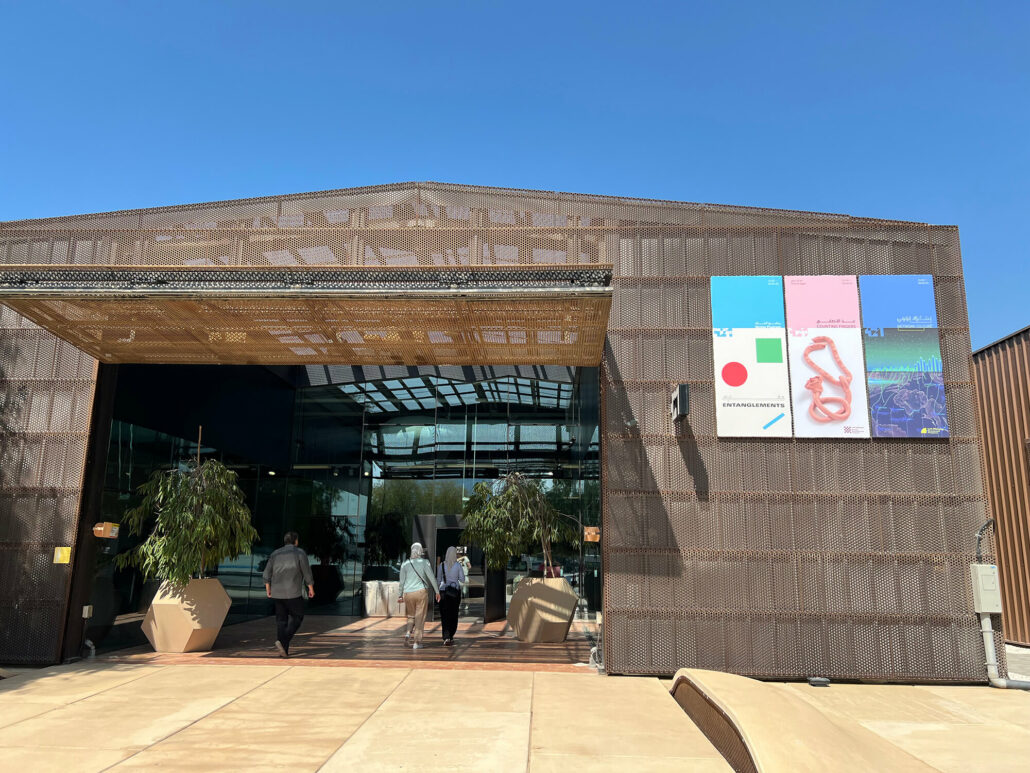
© Suzette Bell-Roberts
In this major solo exhibition at 421, Abu Dhabi, Hana El-Sagini presents a newly commissioned large-scale installation rooted in the instability and fragility of the human experience. The installation showcases over 200 fantastical ceramic objects envisioning a strange world where humans, animals, plants, and inanimate objects blend into semi-distinguishable forms and figures, culminating in surreal sculptures and structures replicating and reimagining healthcare spaces, such as medical waiting rooms, hospital corridors, and doctors’ offices. These spaces, typically perceived as sterile domains, are transformed into dreamlike sites that are bizarre, eerie, and amusing. The exhibition immerses visitors in the artist’s deeply personal world, “my work has always been deeply personal, a reflection of my struggles and triumphs. Themes of death, loss, and resilience permeate my art as I grapple with the complexities of life and the human experience”.
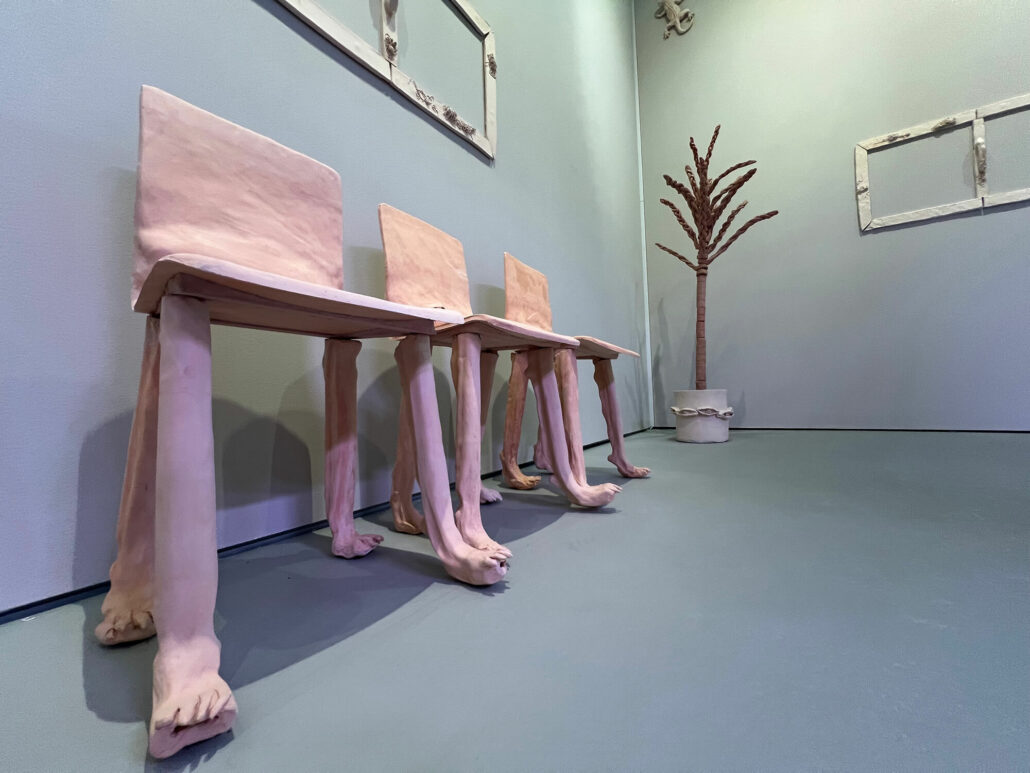
© Suzette Bell-Roberts
Walking through the exhibition, an unconventional narrative unfolds, weaving together elements of reality and imagination, inviting the spectator into a realm where boundaries blur and perceptions shift. “This exhibition is inspired by my journey through the trauma and healing process I experienced when my father passed away and later when I was diagnosed with breast cancer,” the artist says during a tour of her exhibition.
At first glance, the setting appears familiar – a hospital waiting area with its typical fixtures: a TV, a working clock, and a potted plant. Yet, upon closer inspection, the lines between reality and dream become blurred, leaving the spectator questioning the nature of their surroundings. The artist, driven to evoke confusion and introspection, has meticulously crafted this space to challenge the spectator’s perception. The working clock ticks away, marking the passage of time, while plants resemble the locks of the long hair that the artist had to cut off after her chemo-therapy, “to me, it symbolises reincarnation, a poignant reminder of life’s fragility and resilience”.
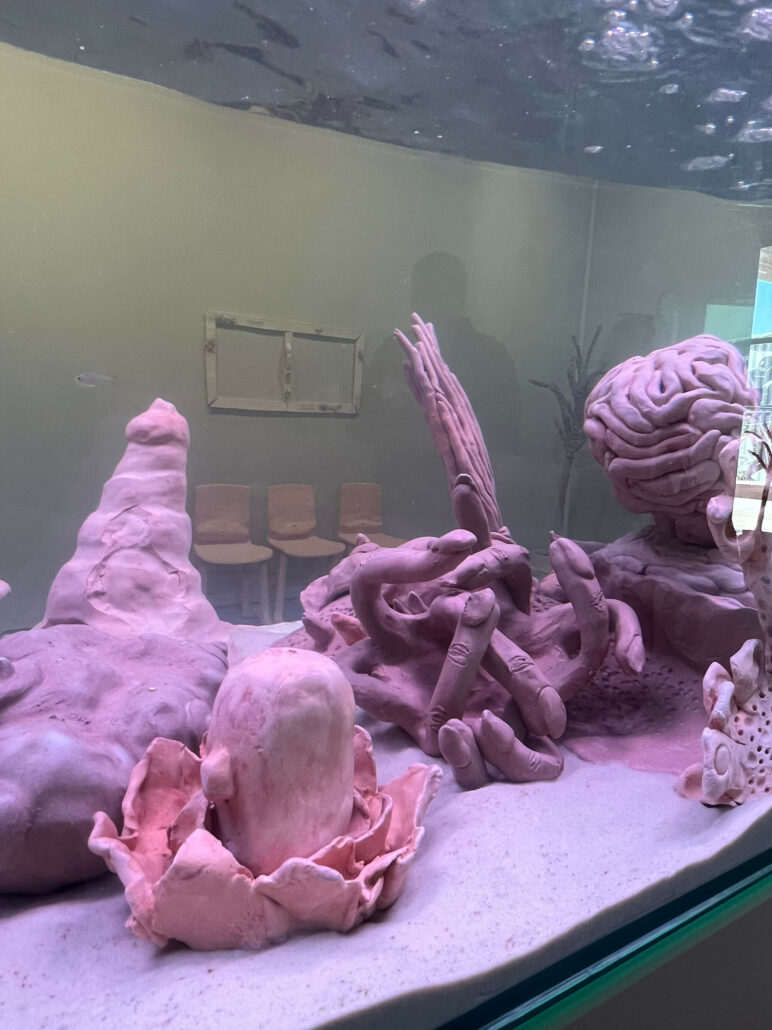
© Suzette Bell-Roberts
The hospital waiting area is transformed into a multisensory experience where objects and memories converge. The aquarium, inhabited by fish displaced from their natural environment, mirrors the uncertainty and displacement felt in the human experience. The coral resembles fingers. The waiting chairs, stripped of their arms, symbolise vulnerability and connection. “I was very intentional, I wanted the chairs to resemble busts or bodies with the umbilical cord, as a symbol of the inter-connectedness between people. I have used dog feet for the legs, our dog was the one that we couldn’t talk to about what we were going through but that’s what carried us through this without knowing it this experience”. Each object within the space carries layers of meaning, from the reincarnation of lost hair to the symbolism of a solitary gecko seeking escape.
Throughout the exhibition, the spectator is invited to participate in the artist’s journey, question, reflect, and find meaning amidst the chaos. Titles play a crucial role, offering glimpses of humour and double entendre, while the hospital directional signs guide the way through the labyrinth of emotions and memories. “Clay is the perfect material, and you must allow yourself to lose control. It’s a partnership. I can be very controlling, and it was time for me to let go because once you create the piece, you put it into the kiln, and you don’t know whether it will survive. The material is very fleshy, intimate and physical but also fragile, and I am talking about the body, so it was perfect”.
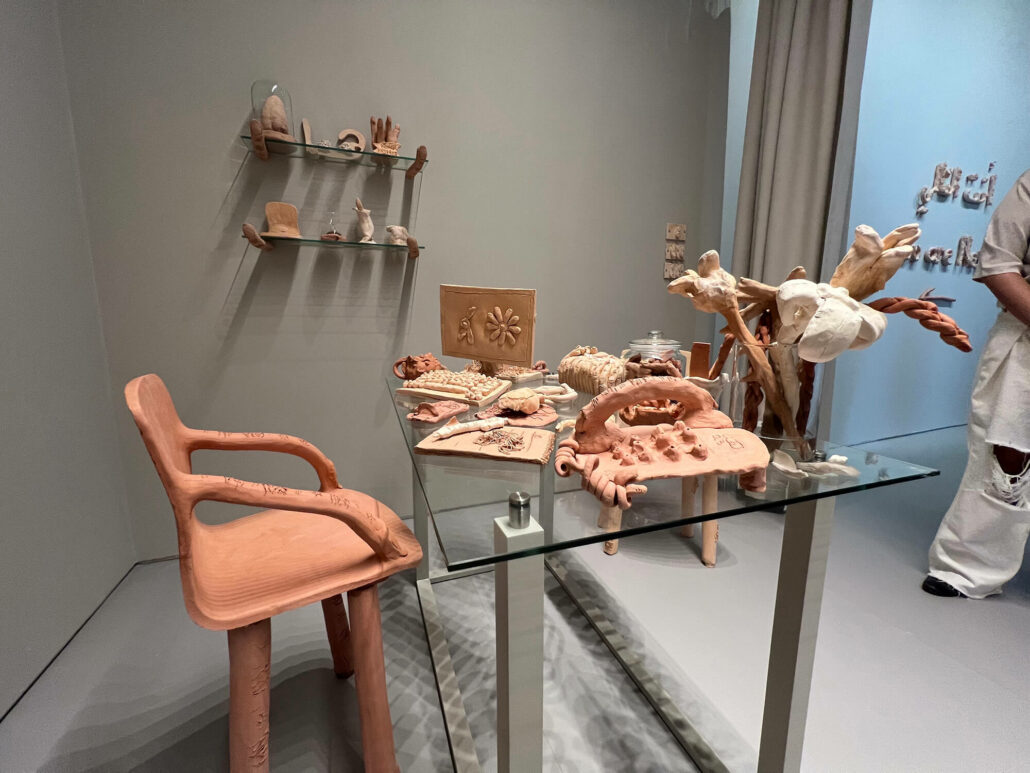
© Suzette Bell-Roberts
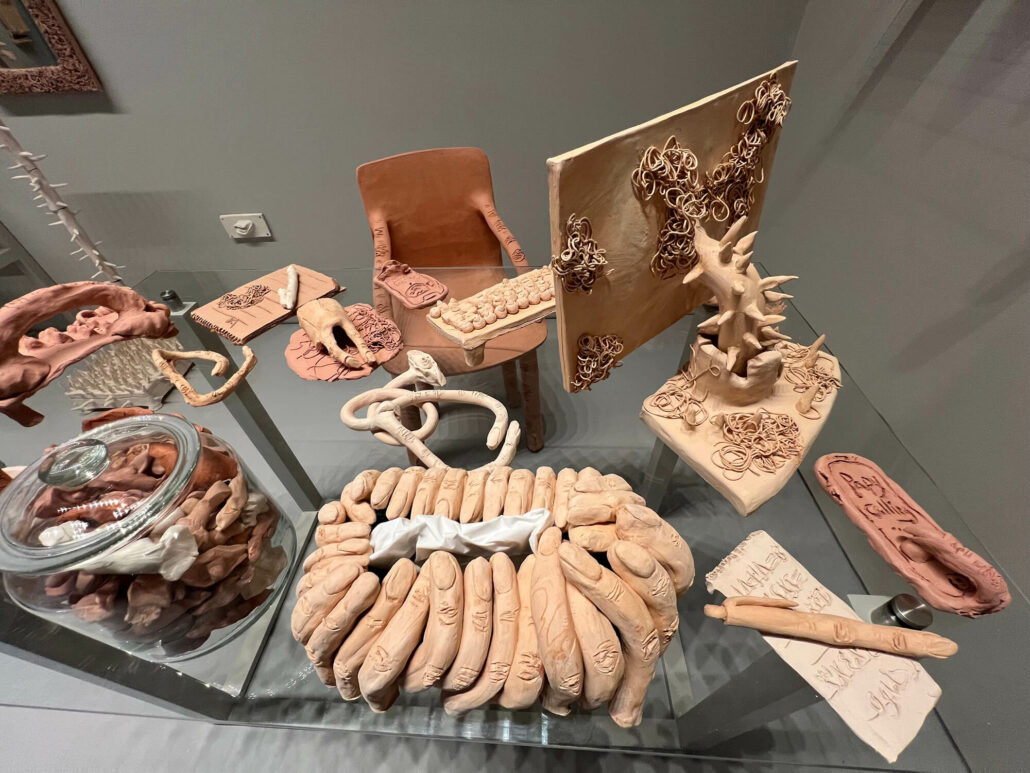
© Suzette Bell-Roberts
The doctor’s examining room is filled with detail, familiar objects placed all around, the desk, and the doctor’s chair, this time with arms, signifying his authority and the more controlled environment of the office. The presence of power outlets speaks to the source of strength found amidst adversity. “Here I put things that would work, an hourglass signifying that here time is controlled by the doctor, as opposed to the waiting room”. As the spectator delves deeper into the exhibition, they are confronted with fragments of the artist’s past – drawings on the wall reminiscent of doctor’s certificates, symbols of intimacy, motherhood, and resilience. In this immersive space, childhood songs intertwine with the rhythms of healing and transformation. The slipper, a metaphor for humanity stripped bare, is a poignant reminder of the journey towards acceptance and self-discovery.
“One of the things that is important to me in my work is that it’s abundant because with ceramics, it’s a precious thing to be put on a pedestal. But I wanted to expose its vulnerability, so I did not glaze the work. I also wanted to display the different colour tones of the clay, reflecting the change of your own skin tone during times of illness and wellbeing.”
Gallery 1 is more than an exhibition – it is a journey through the complexities of the human experience, a testament to the power of art to transcend boundaries and illuminate the path towards healing and understanding.
421 Arts Campus in Abu Dhabi is an independent platform dedicated to emerging artists and creative practitioners in the UAE and across the region. 421 presents a year-round program of exhibitions, talks, workshops, special events and educational initiatives that offer accessible learning opportunities to the broader community and the general public. Many 421 programs are organised in collaboration with local, regional and international partners, engaging children, students, educators, and creative professionals in a participatory approach to artistic and innovative practice. These programs are designed to develop artistic and creative skills, supporting the growth of the UAE’s creative ecosystem.
The exhibition closes on the 28th of April, 2024. For more information, please visit 421 Arts Campus.
Suzette Bell-Roberts is the Co-founder and Digital Editor of ART AFRICA magazine.
